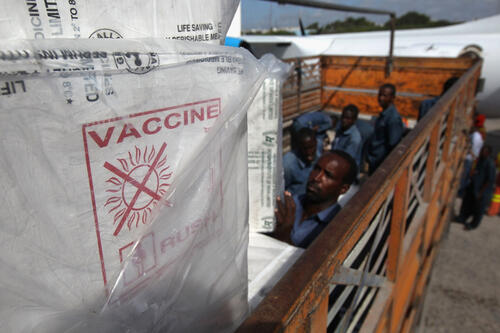Vic Fuchs on health care: A diagnosis, a proposal
At age 94, with an extensive collection of health policy research and publications under his belt, Victor Fuchs has a lot to say about the health care system.
The high cost. The uninsured. The fragmentation.
During a speech at the Stanford Institute for Economic Policy Research (SIEPR), the pioneering health economist narrowed his gaze to whether a single-payer system is the fix to those problems.
The answer is complicated, and it depends on the questions behind the question, said Fuchs, a SIEPR Senior Fellow and the Henry J. Kaiser, Jr., Professor of Economics and Health Research and Policy, emeritus. He is also a senior fellow at the Freeman Spogli Institute for International Studies and a core faculty member at Stanford Health Policy.
Recent challenges to the Affordable Care Act have rekindled a debate over the merits of a single-payer health care system — where one entity, namely the federal government, would foot the bill for essential services for all — and Fuchs spoke at SIEPR to succinctly explain what a single-payer system could achieve, what would probably never happen, and why.
The problem, Fuchs pointed out, is that the United States spends the most of any high-income country on health care, yet Americans are not achieving better health outcomes. Part of the solution would have to address the nation’s higher administrative costs, higher prices for prescription drugs, and the expensive increasing mix of services and specialists.
[[{"fid":"229865","view_mode":"crop_870xauto","fields":{"format":"crop_870xauto","field_file_image_description[und][0][value]":"","field_file_image_alt_text[und][0][value]":false,"field_file_image_title_text[und][0][value]":"The audience listens to a talk by Victor Fuchs about the viability of a single-payer health insurance system.","field_credit[und][0][value]":"Steve Castillo","field_caption[und][0][value]":"","thumbnails":"crop_870xauto","alt":"","title":"The audience listens to a talk by Victor Fuchs about the viability of a single-payer health insurance system."},"type":"media","field_deltas":{"2":{"format":"crop_870xauto","field_file_image_description[und][0][value]":"","field_file_image_alt_text[und][0][value]":false,"field_file_image_title_text[und][0][value]":"The audience listens to a talk by Victor Fuchs about the viability of a single-payer health insurance system.","field_credit[und][0][value]":"Steve Castillo","field_caption[und][0][value]":"","thumbnails":"crop_870xauto","alt":"","title":"The audience listens to a talk by Victor Fuchs about the viability of a single-payer health insurance system."}},"link_text":null,"attributes":{"title":"The audience listens to a talk by Victor Fuchs about the viability of a single-payer health insurance system.","style":"height: 214px; width: 300px; float: left; margin-left: 0px; margin-right: 15px; ","class":"media-element file-crop-870xauto","data-delta":"2"}}]]
Fuchs contended a single-payer system would lower costs. For one, it would create the bargaining power needed to offset the monopolistic powers of those providing the drugs, medical services and equipment.
To control costs, “we must move to something like a single-payer plan, but that alone will not be sufficient,” Fuchs said. “It will depend on what kind of single-payer plan it is.”
Even as it provides for universal health care insurance coverage, a single-payer system could take on various forms, including a blend of private and public controls.
And to have any chance at success, Fuchs said, the single-payer system would have to be simple, require minimum bureaucracy, and provide choice.
Then comes the rub, of course: The political will has historically tread against single-payer.
Americans are not willing to provide subsidies for those too poor to afford health insurance; neither do they have a compulsion for everyone to acquire coverage and contribute to those subsidies.
“The country as a whole has not been willing to fully embrace these two principles,” he said. “And I feel you need to have a strong majority of both if you’re going to have universal coverage.”
And unfortunately, Fuchs added, he does not believe universal health coverage would necessarily improve health outcomes. Many other socio-economic and environmental factors also play a role there.
In leading a brief discussion with Fuchs, Mark Cullen, a SIEPR Senior Fellow and professor of medicine, asked what makes him think the federal government would work to control costs under a single-payer system — when it has thus far chosen to exert little buying power under the current structure.
“I have not discussed the political feasibility of this, deliberately,” Fuchs quipped.
You can learn more about Fuchs’ viewpoint in The Journal of the American Medical Association.







